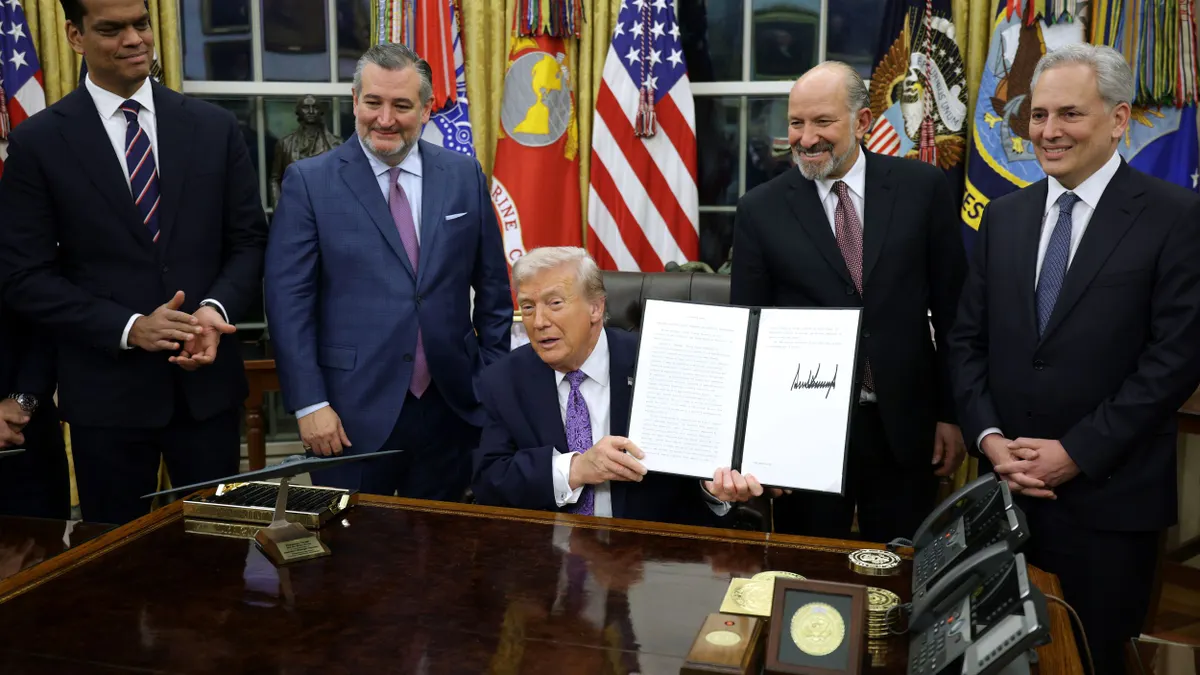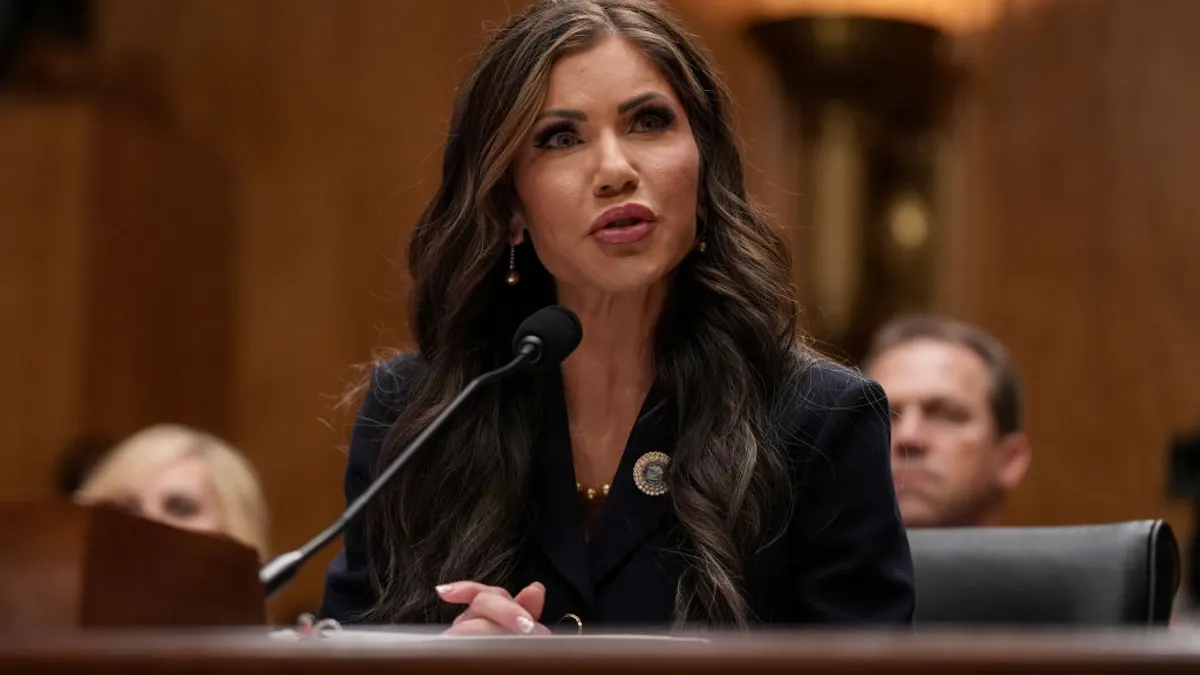The 2018 H-1B cap season begins Monday, marking the start of a race for organizations to apply for H-1B visas to bring specialty foreign workers into the United States. With a limited number available each year, companies vie for available visas to bring in top talent.
Particularly prevalent in the tech industry, organizations bank on H-1B visa holders to help complete specialized technical projects. But the program has been especially contested in the past year, becoming an election issue with promises from President Donald Trump to reform the program to set aside more of those jobs for American workers.
Workers in the tech industry also agree the program needs reform because of perceived abuses, including perceptions of companies using H-1B visas to drive down labor costs.
Though contested, the H-1B program allows companies across sectors to access the global talent pool, incorporating diversity of thought and talent into a workforce. With the cap season starting, here are four things CIOs and IT decision makers need to know about the program:
1. The program fills up fast
H-1B visas are in high demand and the U.S. Citizenship and Immigrations Services (USCIS) regularly hits the cap of 65,000 visas — with an additional 20,000 visas set aside for graduate degree holders from U.S. universities — within the first week of the cap season.
Since fiscal year 2014, the cap has been reached within five days of the submission period opening, according to USCIS data complied by the American Immigration Council. This is largely because of demand for the program.
From FY 2001-2003 the program allowed for the disbursement of 195,000 H-1B visas, but was eventually changed to the current allotment in FY 2006. Though the number of allotted H-1Bs was lowered, the demand for more visas is still present.
When the cap is hit, USCIS uses a computer-generated lottery to select the visa petitions for the 65,000 visa general category and the 20,000 for the advanced degree exemption, according to USCIS. The cap season generally starts on April 1, however because this date fell on a weekend, USCIS opened up the FY 2018 season on April 3.
This year, there are no expedited H-1B visas for the FY18 allotment, allowing USCIS to reduce the overall H-1B visa processing times.
2. Politics at stake
The H-1B program has become a politically contested issue, particularly during election cycles, with opponents decrying foreign workers displacing Americans from jobs while proponents say the program is critical for accessing hard-to-find talent.
"The H-1B has been hijacked as the main highway to bring people from abroad and displace Americans," said former Congressman Bruce Morrison, D-CT, in an interview with CBS "60 Minutes." Morrison was one of the authors of the Immigration Act of 1990, which started the H-1B program.
Morrison blames the reduced salary requirements for allowing companies to take advantage of the program. Companies are required to pay workers from outside the U.S. at least $60,000 per year, which is well below the going rate for many tech occupations in the industry. In response, some legislators hoping to reform the program have proposed legislation that would prioritize advanced degree holders and those H-1B visa holders being paid higher wages.
One proposal from Congressman Darrell Issa, R-CA, would increase the salary requirements for H-1B positions from $60,000 to $100,000, which would potentially help with U.S. worker displacement.
While opponents have called for program reforms, the tech industry has asked for an expansion of the program to facilitate recruiting in specialty positions.
Though there are extreme examples of program abuse, program critics often do not get a full picture, according to Leslie Dellon, staff attorney focusing on business immigration at the American Immigration Council. The H-1B program employs more than just IT workers, with some school systems employing language teachers or physicians working in underserved areas.
3. Occupations involved
In FY14, 65% of the 315,857 H-1B visas were for workers in computer-related occupations, according to USCIS. The next most awarded occupation, architecture, engineering and surveying, accounted for just 9% of the visas. The top five most awarded occupations also included workers with administrative specialists, education and medicine and health.
Though there is a max number of H-1B visas Congress allows to be issued each year, those visas that are renewed or have updated employment information do not count against a cap.
This means, the total number of H-1B visa holders in the U.S. is beyond the cap for each fiscal year.
4. Leading companies
Though the majority of H-1B visas go to workers in the tech industry, the leading H-1B employers are consulting firms. Over the past three years, Infosys Limited and Tata Consultancy Services has led the sector in H-1B visa employment, according to data from My Visa Jobs.
This has in part contributed to the reputation of the H-1B visa program being responsible for the displacement of American workers.
"What's changed over probably the past 10 years is the big push of the Indian heritage firms to use the H-1B program to bring in top talent," said Steven Hall, partner, digital advisory services at ISG.
In FY14, almost 70% of H-1B visas petitions went to people from one country, according to USCIS. This disparity increases the negative reputation of the program.
Since the labor arbitrage and outsourcing business began more than 20 years ago, organizations have debated it, according to Hall. Though it can be disruptive, the business model has allowed for new opportunities, freed up capital and has not hurt the overall employment in the IT industry.
"I understand the micro piece and the individuals that are sometimes impacted, but it's been healthy for the overall environment and the overall economy," Hall said.
Though there is a negative reputation of consulting firms accessing the majority of available visas, the H-1B program has its merits, allowing for companies to access talent from around the world.
"If you look at the hiring profiles of Facebook, Microsoft, Google or Amazon, they truly want a global work force they want the best of the best," Hall said. "There's great talent throughout the world so you have to have a program that enables that innovation to come together."






















